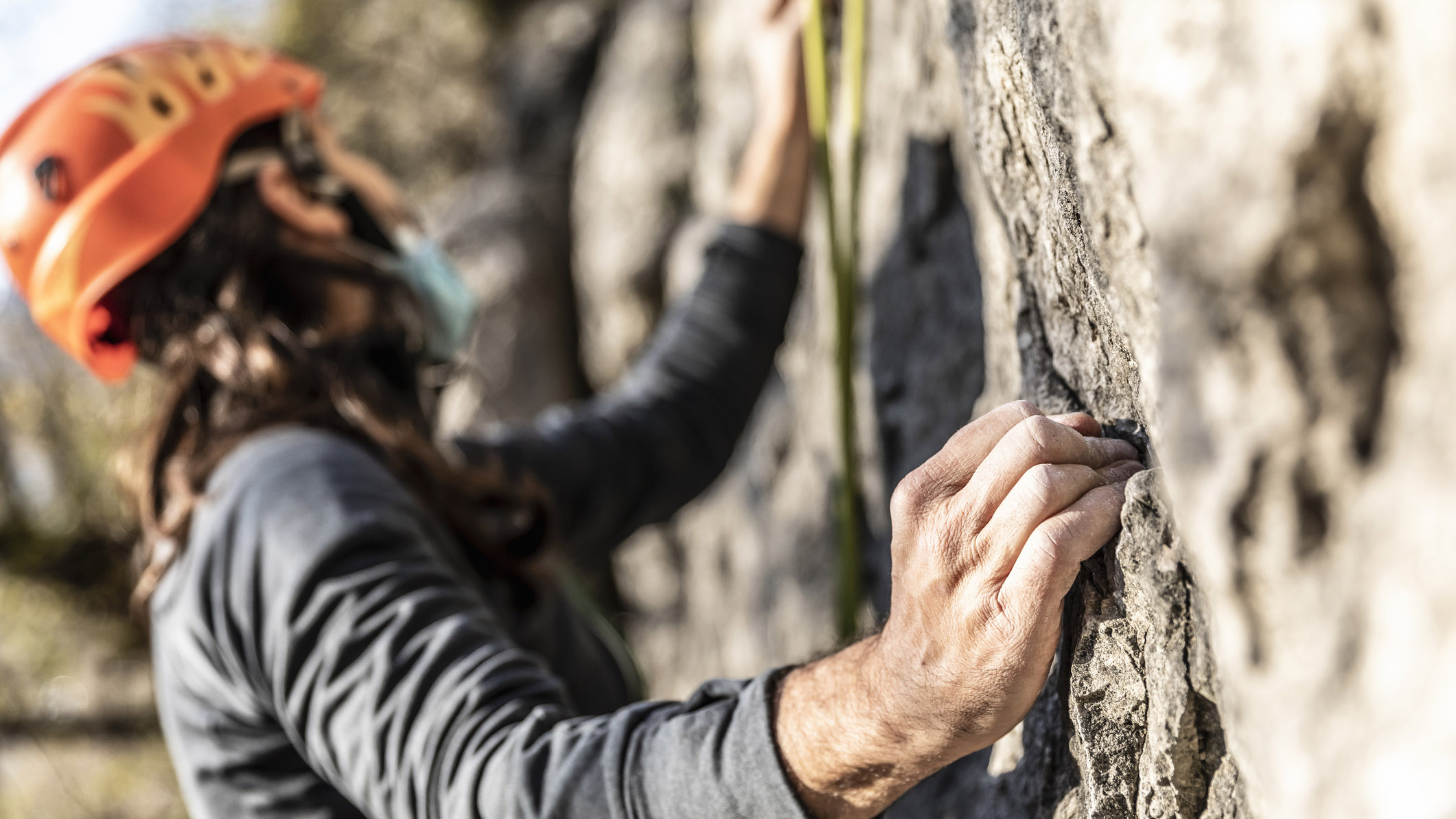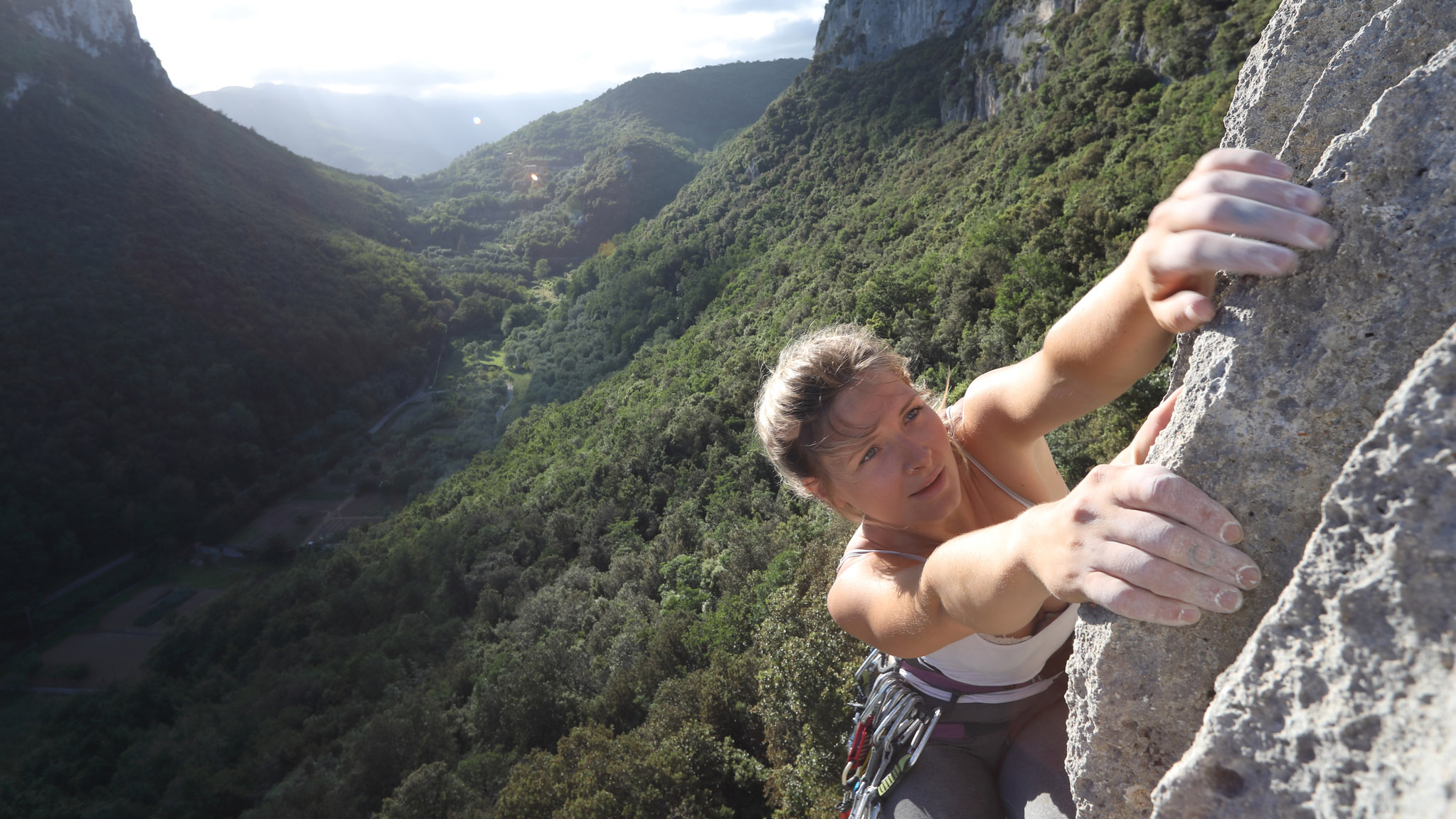Rock climbing techniques: the skills that will see you moving up the grades
Our guide to the standard rock climbing techniques, from everyday techniques like edging, smearing and bridging to all-or-nothing dynos

The world’s best climbers don’t beast their way up a rock wall, they use carefully chosen rock climbing techniques to conquer the wall with maximum efficiency. Many hours are spent mastering and honing technique, balance, movement to the point where they can gracefully move up the wall with minimum effort.
There’s a superb video out there in the realms of the web of Alex Honnold watching, commenting on – and most of the time laughing at – famous climbing scenes from Hollywood blockbusters. “This is completely outrageous,” he exclaims with a huge smile, as he watches Tom Cruise leap from one wall to another in Mission Impossible 2. Then he sees a close up of Cruise’s cut up hand clinging to a ledge, going on to say that ‘typically if you have huge wounds on your fingers, it’s because you have poor technique in cracks.”

So, where is poor Tom going wrong? Let’s consider the fundamental rock climbing techniques first, before moving on to specifics. An appreciation of your centre of gravity and how to shift it in certain situations is key. If you’re climbing an angled slab, holding the body away from the rock to maintain your centre of gravity over your feet is important. With this technique, the majority of the climber’s weight is on their feet and their hands are used primarily for balance. When taking on mountaineering pitches with a weighty hiking backpack, this kind of appreciation becomes even more critical.
However, on a vertical wall, a climber needs to keep their body close to the rock, to minimise the pull and strain on their hands. This kind of climbing relies on a certain amount of flexibility, which can be improved with specialized activities like yoga for rock climbing. A key bit of advice for when holding a stance is that straight arms are better than bent arms, as the strain is carried by your skeleton rather than your muscles.

Rock climbing techniques: footwork
Getting your footwork right is key to improving your other rock climbing techniques, as it optimizes the way you use your lower body and takes the pressure off your hands and arms. This is especially important when trad climbing, as you will need to be able to support yourself with your feet while you place protection using your hands.
Edging and smearing are two rock climbing terms that describe the main footwork techniques. Edging involves stepping onto a hold with the rubber edge of your shoe. This can be your inside edge, with the bonus of stability from your big toe, or the outside of your foot. Which way around you choose will depend on the direction of your next move.

Smearing is when you use the friction between the rubber of your shoe and the surface of the rock. This technique is usually deployed when proper holds are at a premium, such as when slab climbing. The soles of the best approach shoes are designed with this kind of technique in mind, one of the things that sets them apart from hiking shoes. The greater the surface area in terms of contact between shoe and rock, the greater the friction will be and the more secure the placement. With this in mind, always keep your heel low to maximise this and keep your foot absolutely still until the time comes to lift and seek the next placement.
All the latest inspiration, tips and guides to help you plan your next Advnture!
Rock climbing techniques: handholds
There are many rock climbing techniques associated with different kinds of handholds. Jugs are the easiest holds, kindly all accommodating all your fingers and giving you a great sense of security. A side pull, or layaway, is when a jug, or an edge, is used by pulling sideways and shifting your body weight. The opposite to this is a gaston, named after the legendary French climber and alpinist Gaston Rébuffat. This is where you push a hold with your thumb pointing down and your elbow out, thus creating friction against the hold.

An undercut or undercling is where the climber uses the underside of a hold, pulling outwards and upwards, which can feel counter-intuitive at first but once mastered is a great weapon to have in your arsenal. Similar to smearing, palming is when you use the palms of your hands to create friction against the wall and is useful when there are no handholds. If deploying this technique when scrambling, just remember that you’ll get more friction from your skin than from your best hiking gloves.

As you progress to tougher grades, finger strength becomes more and more important. In terms of finger grips, beginners to climbing will probably adopt a closed crimping technique. This is when the fingers make a tight angle at the second joint and the thumb pushes over the index finger. In an open crimp the thumb is not used and the fingers are bent perpendicular to each other at the second joint.

Rock climbing techniques: bridging
Bridging, also known as stemming, involves pushing against opposing surfaces with any combination of hands and feet to bridge a gap. The key here is maintaining balance through pressure on both surfaces. Bridging can be used on corners and wide chimneys.

Rock climbing techniques: laybacking
When a climber uses the opposing forces of arms pulling on a crack and feet pushing against the rock, this is known as laybacking. It’s an efficient move if your arms are straight, as this passes the majority of the work to your feet. It requires you to maintain tension to hold your position, while walking your feet and moving your hands up at the same time. Corner cracks and flakes can be climbed in this way.
Rock climbing techniques: mantelshelving
Mantelshelving is when a climber gains a flat ledge by pushing down with their hands and running their feet up the wall to meet their hands on the ledge. This technique is often employed when topping out at the apex of a route, though it is also useful when you want to gain a significant ledge mid-climb.
Rock climbing techniques: jamming
Jamming is a technique where a climber wedges a part of their body, usually a hand, fist or foot into a crack. It’s the same technique used by mountaineers, when they jam their winter hiking boots into a gap in the rock. The difference here is that, unlike with a rigid boot, the climber has little protection from scrapes and discomfort.

Rock climbing techniques: dynoing
Of all the rock climbing techniques, the dyno is… er… the most dynamic. Tom Cruise’s leap that we mentioned at the start of this guide was, in effect, a hugely exaggerated dyno. A calculated gamble, a dyno is a controlled launch to gain a hold that is just beyond reach, which takes a hefty amount of commitment and conviction. Usually, the hold would be an enticing jug that the climber was confident they’d be able to hold. Upon making the leap, the climber aims to latch onto the hold at the precise deadpoint, when their upward momentum has stopped but downward momentum has yet to kick in.
Alex is a freelance adventure writer and mountain leader with an insatiable passion for the mountains. A Cumbrian born and bred, his native English Lake District has a special place in his heart, though he is at least equally happy in North Wales, the Scottish Highlands or the European Alps. Through his hiking, mountaineering, climbing and trail running adventures, Alex aims to inspire others to get outdoors. He's the former President of the London Mountaineering Club, is training to become a winter mountain leader, looking to finally finish bagging all the Wainwright fells of the Lake District and is always keen to head to the 4,000-meter peaks of the Alps. www.alexfoxfield.com

